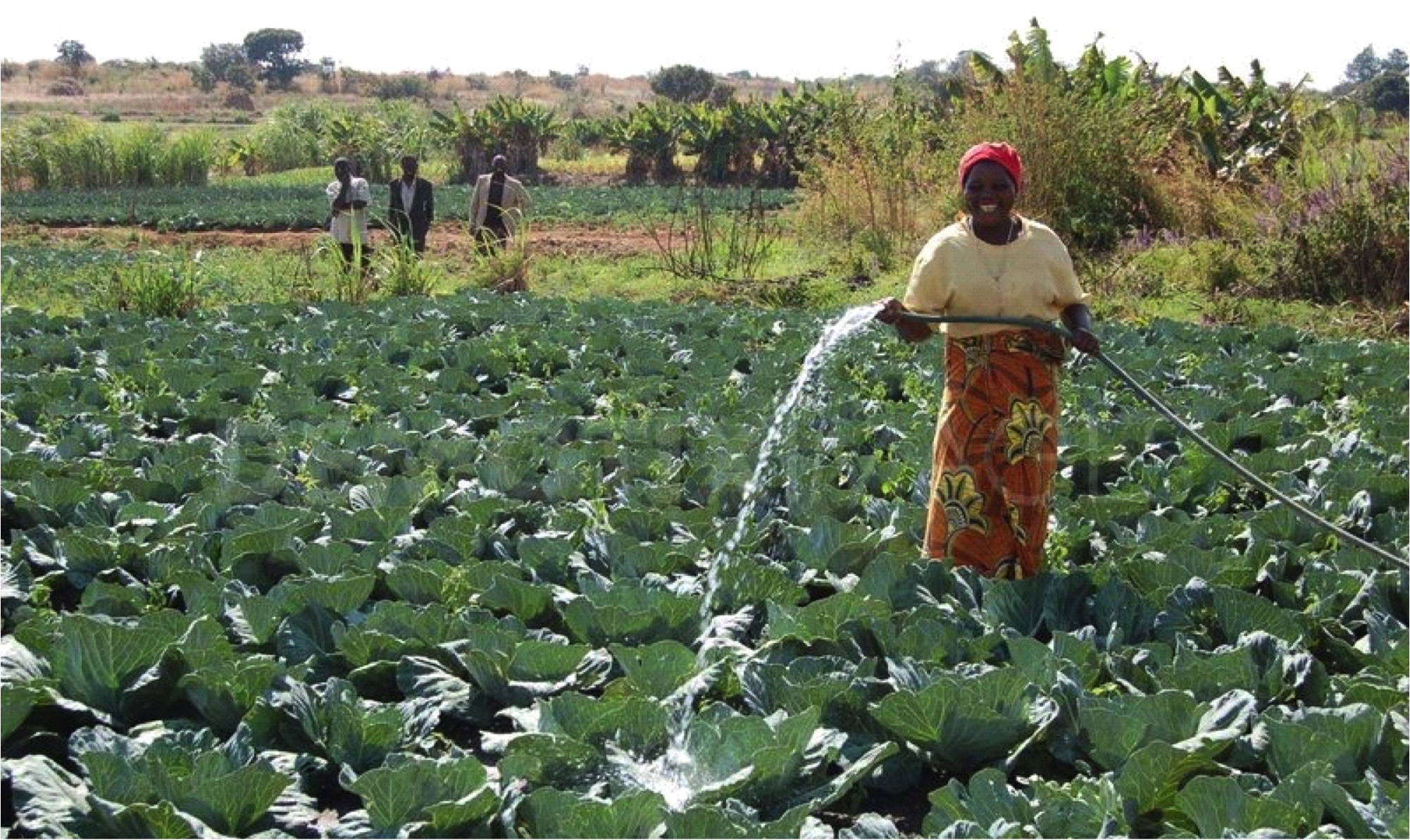The 2017 Global Forum for Food and Agriculture (GFFA), taking place Jan. 19-21 in Berlin, has chosen this highly appropriate and timely motto: “Agriculture and Water—Key to Feeding the World.” The sustainable use of water is one of the key global challenges of the 21st century, while agriculture is the largest global water user now and will be for the foreseeable future.
Much has been given to agriculture and, under growing water scarcity, variability, pollution, and continued lack of access to this vital resource by many—much will be demanded from agriculture to ensure that the Sustainable Development Goals (SDGs) 6 on Water and SDG2 on Ending Hunger are achieved—and without adversely affecting other water-related targets and goals. Meanwhile, efforts to meet the SDGs must also dovetail with the objectives of the Paris Climate Agreement.
The future looks challenging. Irrigation currently accounts for around 70 percent of all freshwater withdrawals globally and an even higher share—85 percent—of global water consumption. Competition for water use between agriculture and other consumers is rapidly increasing as a result of population and economic growth and associated urbanization. Climate variability and change intensify this competition by increasing demand for more secure water storage, supply, and access. At the same time, increased investment in agricultural water management, with a focus on expanding access and increasing efficiency, and spanning the irrigation to rainfed continuum, will be essential to ensure that important food and nutrition security benefits can be sustained and enhanced into the future.
Competition for freshwater resources is putting in peril the future of water and agricultural systems. Today, an estimated 7 percent of cereals are irrigated with groundwater resources that are not being replenished. This race to the bottom must be halted before key food-producing areas are taken permanently out of production and related ecosystems suffer irreversible impacts. A session at GFFA 2017 and a new CGIAR groundwater solutions initiative, GRIPP, tackle these issues.
Growing pressure on freshwater resources has also led to rapid increases in water pollution, particularly in key food-producing areas of China and India. Today, 1 in 6 people globally are at high risk from proximity to nitrogen pollution and 1 in 4 people are at high risk due to phosphorus pollution. Water pollution levels, including for nitrogen, phosphorus and BOD, are expected to worsen dramatically in the future, particularly in Africa and Asia.
At the same time, access to water for food and nutrition security remains out of reach for millions of people, and the important needs of women for productive water uses are seldom recognized, as the recent Committee on World Food Security Report, “Water for food security and nutrition,” documents.
With agricultural ministries increasingly embracing the responsibilities associated with agriculture being the world’s main steward of anthropogenic freshwater uses, important advances in water management can and should be driven by GFFA 2017 and the ensuing G-20 meeting that also focuses on agricultural water. Here are some recommendations:
- Improve data collection and monitoring of agricultural water consumption. Both governments and farmers cannot manage what they don’t measure. These efforts should go beyond the simplified indicators that form part of relevant SDG 6 on water targets. The Sustainable Water Future Program under Future Earth and the CGIAR Research Program on Water, Land and Ecosystems (WLE) are working towards improved measurement and monitoring.
- Establish principles for sustainable agricultural water management. Guidelines are needed that set out principles and describe internationally accepted standards and practices for the responsible management of water use in agriculture, similar to those that already exist on the tenure of land, fisheries, and forests. This could be taken up by the Committee on World Food Security.
- Share best practices. An ”agricultural water solutions platform” drawing contributions from farmers, civil society, government and the private sector, could be a clearinghouse for water management information and techniques. This could be patterned on the CGIAR WLE solution platform. Importantly, to overcome access, scarcity and pollution challenges, solutions must reach beyond traditional agricultural water management practices or technologies and draw on an array of options impacting water, such as agricultural trade, agricultural input price policies and subsidies in general, advances in crop and livestock breeding, robotics and ICT, green infrastructure, postharvest loss reduction, payments for ecosystem services and community-based management, to name a few.
- Improve governance. First, this means strengthening water rights and water rights systems. Based on these strengthened rights to water use, governance systems need to be urgently reformed in many groundwater-fed irrigation systems through strengthening communal management. In water-scarce, public surface systems, re-engagement with Water User Associations that operate on the front lines of water conservation efforts is warranted, as well as piloting of water brokerage and market systems to ensure that water is used wisely and that those who lose access get compensated.
To achieve all of these things, agricultural ministries, the main stewards of human freshwater use, need to work much more closely with colleagues from water and public works ministries and should also get a seat at international water decision-making tables—when these are established. The GFFA and ensuing G-20 meetings are the perfect stepping stone to set these important developments in motion.
Update: The GFFA 2017 Communique by 83 agriculture ministers on agricultural water is now published. Click here to read (PDF).
Claudia Ringler is Deputy Director of IFPRI’s Environment and Production Technology Division (EPTD).







